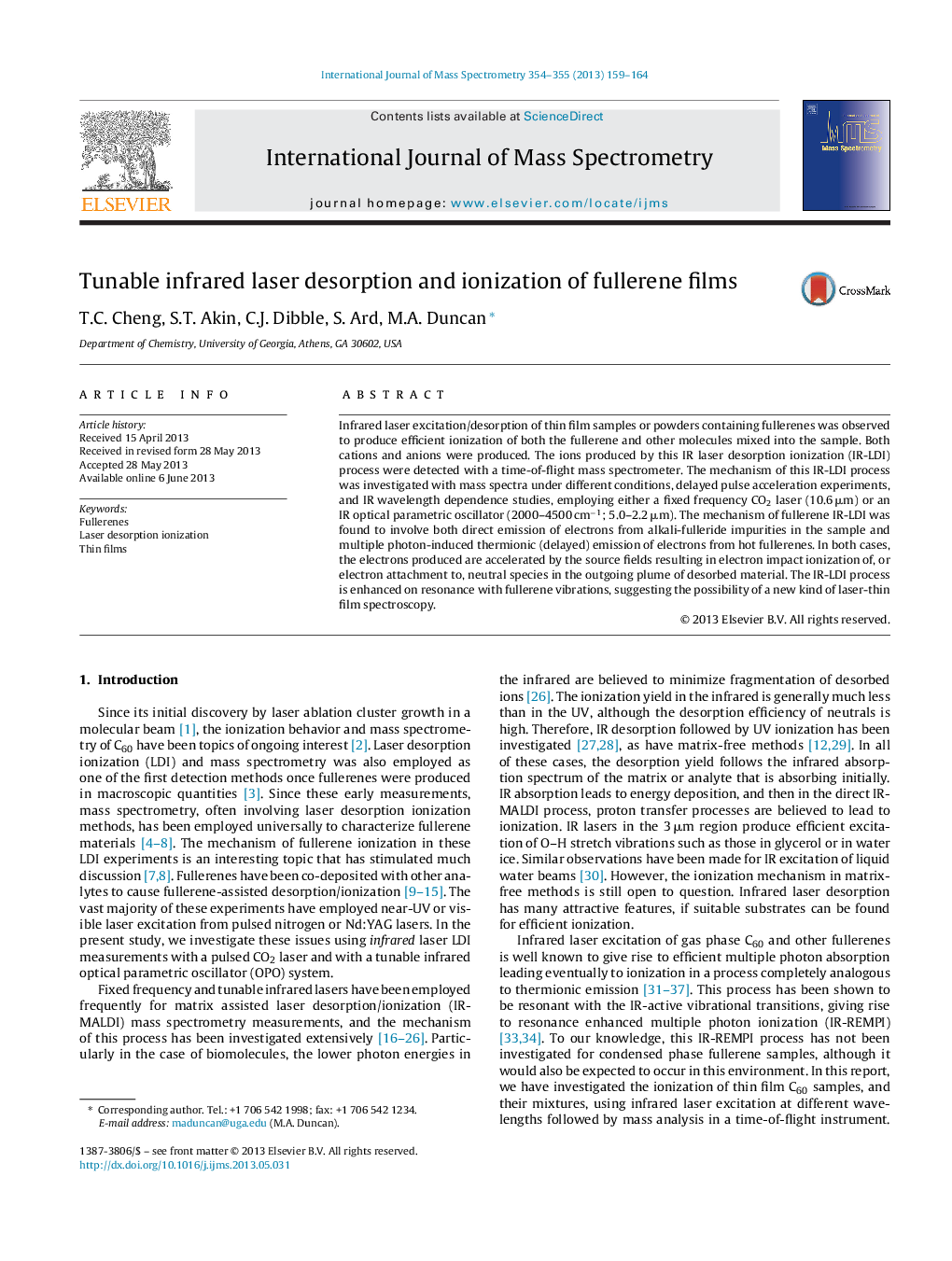| Article ID | Journal | Published Year | Pages | File Type |
|---|---|---|---|---|
| 7605396 | International Journal of Mass Spectrometry | 2013 | 6 Pages |
Abstract
Infrared laser excitation/desorption of thin film samples or powders containing fullerenes was observed to produce efficient ionization of both the fullerene and other molecules mixed into the sample. Both cations and anions were produced. The ions produced by this IR laser desorption ionization (IR-LDI) process were detected with a time-of-flight mass spectrometer. The mechanism of this IR-LDI process was investigated with mass spectra under different conditions, delayed pulse acceleration experiments, and IR wavelength dependence studies, employing either a fixed frequency CO2 laser (10.6 μm) or an IR optical parametric oscillator (2000-4500 cmâ1; 5.0-2.2 μm). The mechanism of fullerene IR-LDI was found to involve both direct emission of electrons from alkali-fulleride impurities in the sample and multiple photon-induced thermionic (delayed) emission of electrons from hot fullerenes. In both cases, the electrons produced are accelerated by the source fields resulting in electron impact ionization of, or electron attachment to, neutral species in the outgoing plume of desorbed material. The IR-LDI process is enhanced on resonance with fullerene vibrations, suggesting the possibility of a new kind of laser-thin film spectroscopy.
Related Topics
Physical Sciences and Engineering
Chemistry
Analytical Chemistry
Authors
T.C. Cheng, S.T. Akin, C.J. Dibble, S. Ard, M.A. Duncan,
